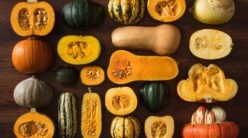[ad_1]
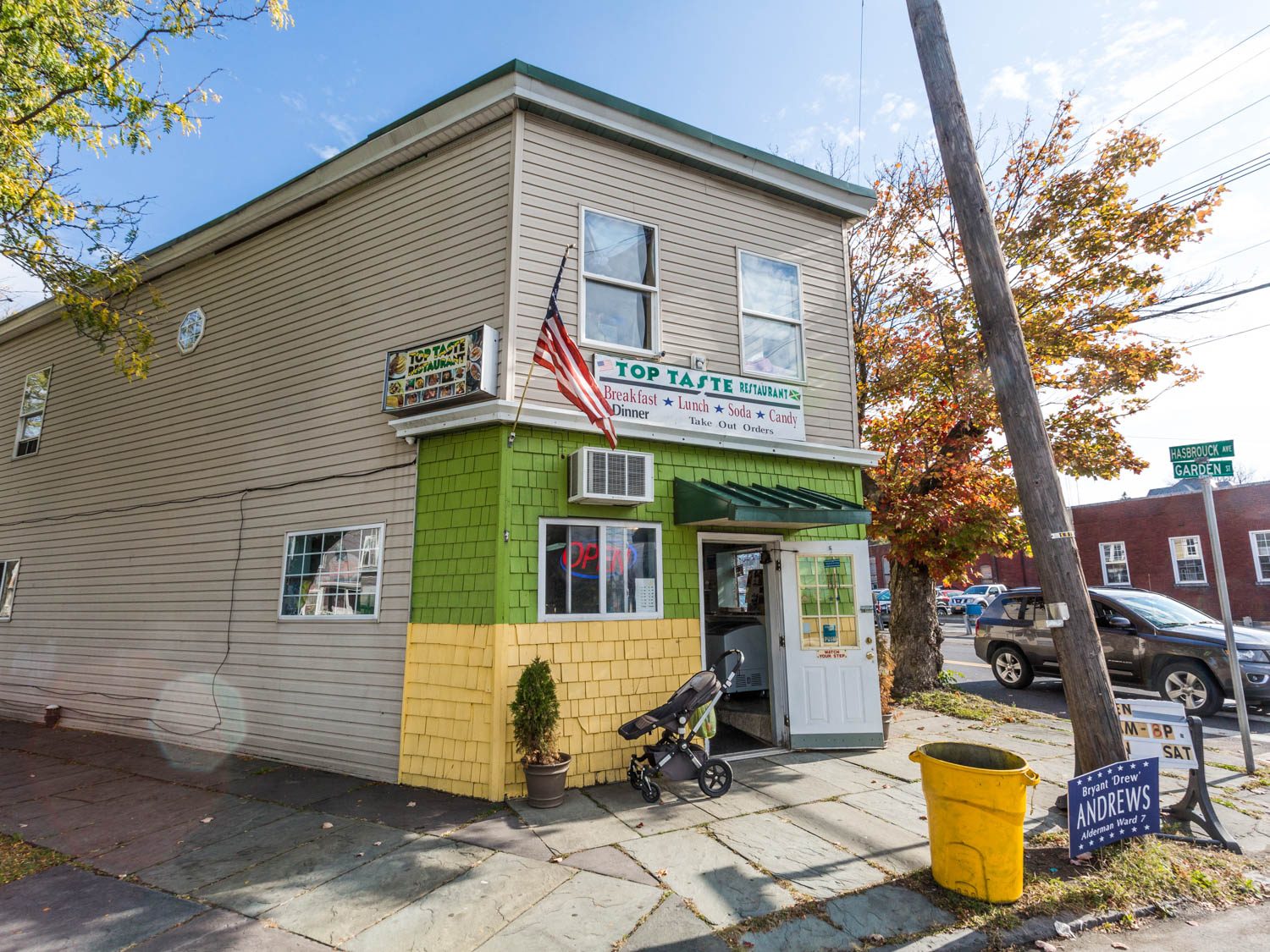
[Photographs: Gus Aronson]
This sprawling city on the Hudson River, just 100 miles north of New York City, shares one thing with the faraway capital of Jamaica—its name. Home to just over 23,000 residents, Kingston, New York, is a jumbled mixture of architecture and history: limestone houses from Dutch colonial times, and more modern ones built during the rush of wealth brought when IBM opened a manufacturing plant in the ‘50s. Today, in a place that has seen extremes of both wealth and poverty, there are dimly lit bars and craft breweries, cheap dives and upscale bistros. And there is Top Taste, Kingston’s only Jamaican restaurant, owned by Albert Samuel Bartley and his wife, Melenda.
Bartley, in his mid-50s, is tall and handsome, and prone to interrupting his sentences every so often with a booming laugh. He favors brightly colored button-up shirts, which he wears beneath a crisp white apron. Most of Bartley’s customers know him as Sammy; some just call him Uncle. The tiny corner building—painted yellow and green, the colors of the Jamaican flag—is nestled into a residential neighborhood at a nondescript four-way intersection.
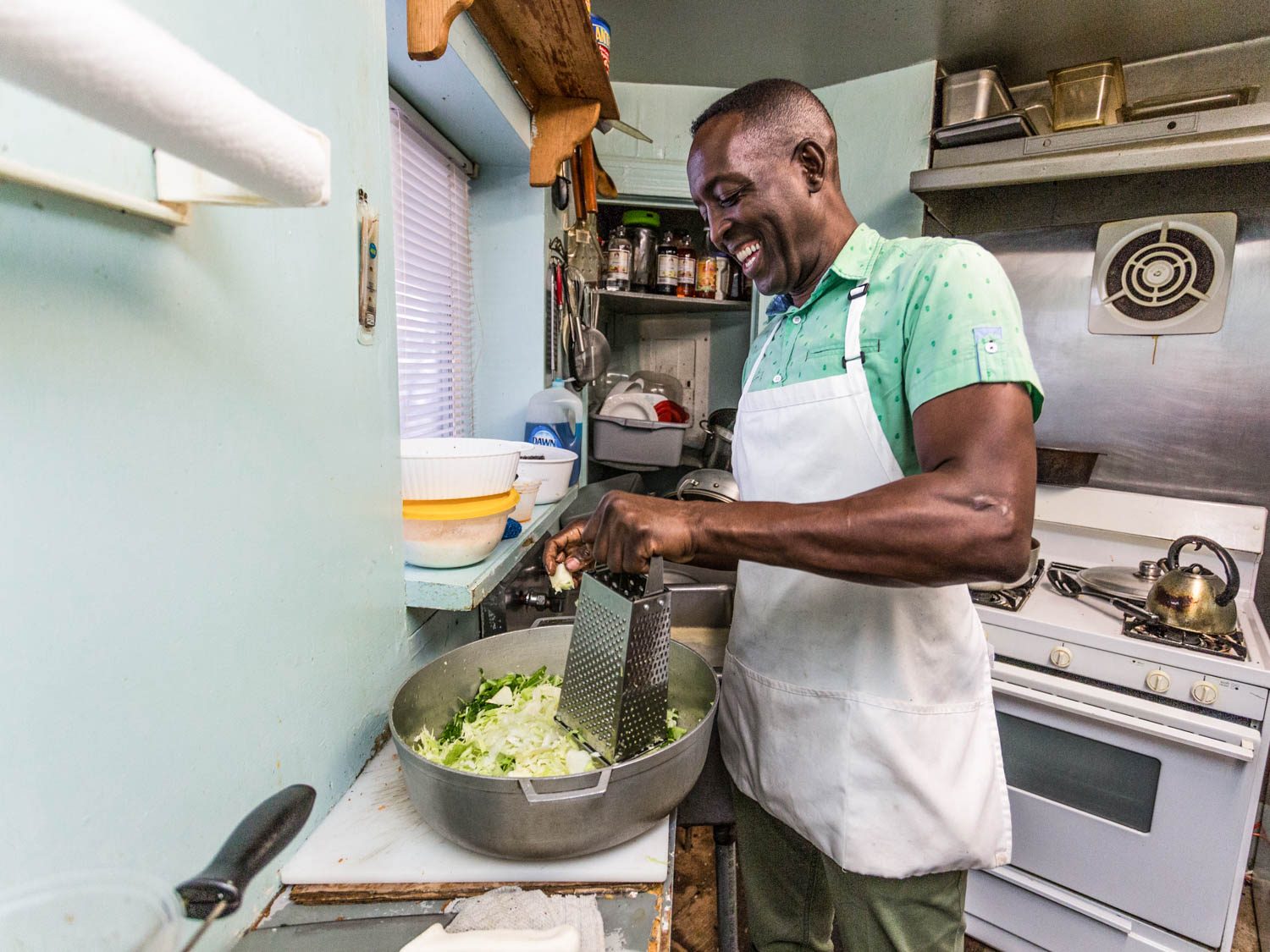
Bartley at work in his kitchen.
You know that Top Taste is open for business as soon as you crack your car door and hear the dancehall music blasting from inside: Fiwi Linkz, an app on Bartley’s old Blackberry, lets him stream all the best Jamaican stations from back home. Damian, Bartley’s adult son, is out back, putting chicken quarters on the grill to smoke. The scent of charred Scotch bonnet peppers wafts up from the coals and snakes around the block.
Bartley grew up in Clarendon Parish, on the south side of Jamaica. As a child, he loved to cook, and his grandmother was a very good teacher. “I would do most of the odd parts,” he recalls, including grating the coconut that his grandmother would then mix into a thick batter for her famous coconut cake. He woke up every day looking forward to his school’s cooking class: “When I was in Jamaica, if you wanted me to go to school, you got to put me in the kitchen.” After school, Bartley was right back at his grandmother’s stove, preparing plates of food and selling them to the local mechanics. Those offerings included typical Jamaican dishes like jerk chicken, rice and peas, and plantains, along with some of his personal favorites—barbecue chicken and mac and cheese.
In his 20s, Bartley moved to the Bronx, where some of his family already lived. He got a job at a canning factory and worked there for nearly 30 years. When his employer relocated to Boston, Bartley called it quits and moved to Kingston, preferring the slower speed of life he saw there.
But there was another noticeable difference about this new city. Strolling through the Bronx, Bartley could always find markets stocked with goat, oxtail, and cow’s feet, plantains, pigeon peas, and every sort of spice and herb he needed to cook his favorite foods. Home to America’s largest Jamaican community, New York City held nearly all the flavors of his home country. In New York’s Kingston, Bartley had to search harder for a taste of home.
A few months after moving, Bartley saw a “for sale” sign in front of the building that now houses Top Taste. “Wow, this would be a nice place to open a restaurant,” he thought, and just like that, Bartley bought the building.
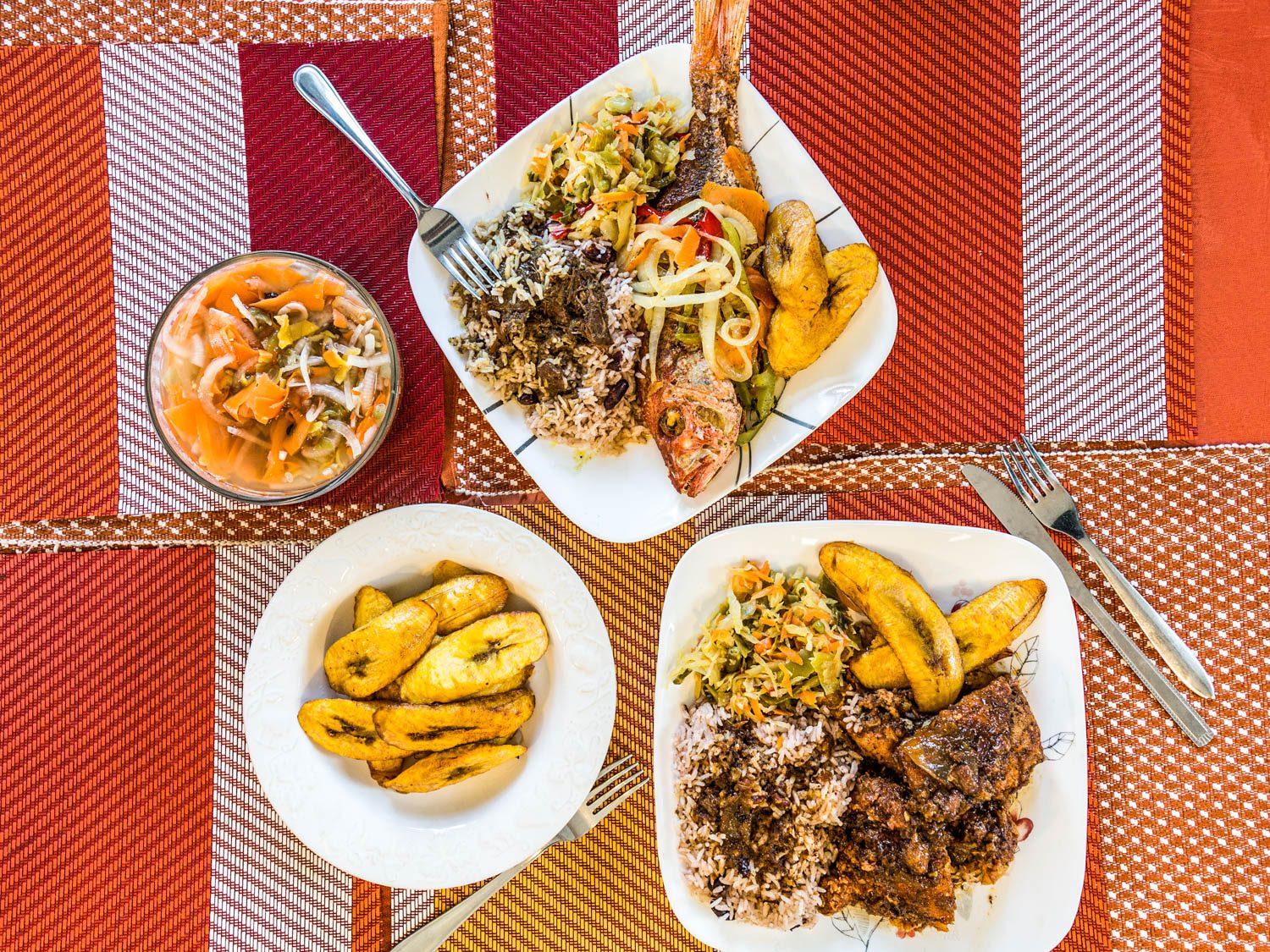
A few of the signature dishes at Top Taste, including Melenda’s whole fried fish.
Even for a seasoned professional, opening a restaurant is a gamble. The risks are much steeper for someone who has never worked in, let alone run, an eatery before. But, while Bartley had never held a restaurant job before opening Top Taste, he had spent his life cooking for people. Keeping customers well fed was not a challenge. What was hard, he says, was handling the piles of paperwork and taxes that came every month. “Taxes to pay, insurance to pay. We just keep all those things in our minds and keep on going all the time…” Bartley trails off. It has never been his favorite part of the business.
A sign above the shop’s door advertises Top Taste as a takeout restaurant, though visitors can also eat at one of two tables squeezed into the tiny storefront. Often, deep in conversation with Bartley or Melenda, customers will unpack their to-go orders and eat while they talk. Both tables are stocked with hot and jerk sauces and glass containers full of a spicy mixed pickle—Scotch bonnet peppers, ribbons of carrot, and chopped onion—in a brine of white vinegar, peppercorns, and allspice berries. Melenda says this “pickling pepper” is meant to be ladled over a whole fried fish, which is one of her specialties. Taped to the wall behind the cash register, next to a photo of Obama, is a neon green poster board scrawled with the day’s menu. Curry goat, jerk or stew chicken, and oxtail are always on it, served in heaping portions alongside peas and rice, plantains, and a gently steamed cabbage salad.
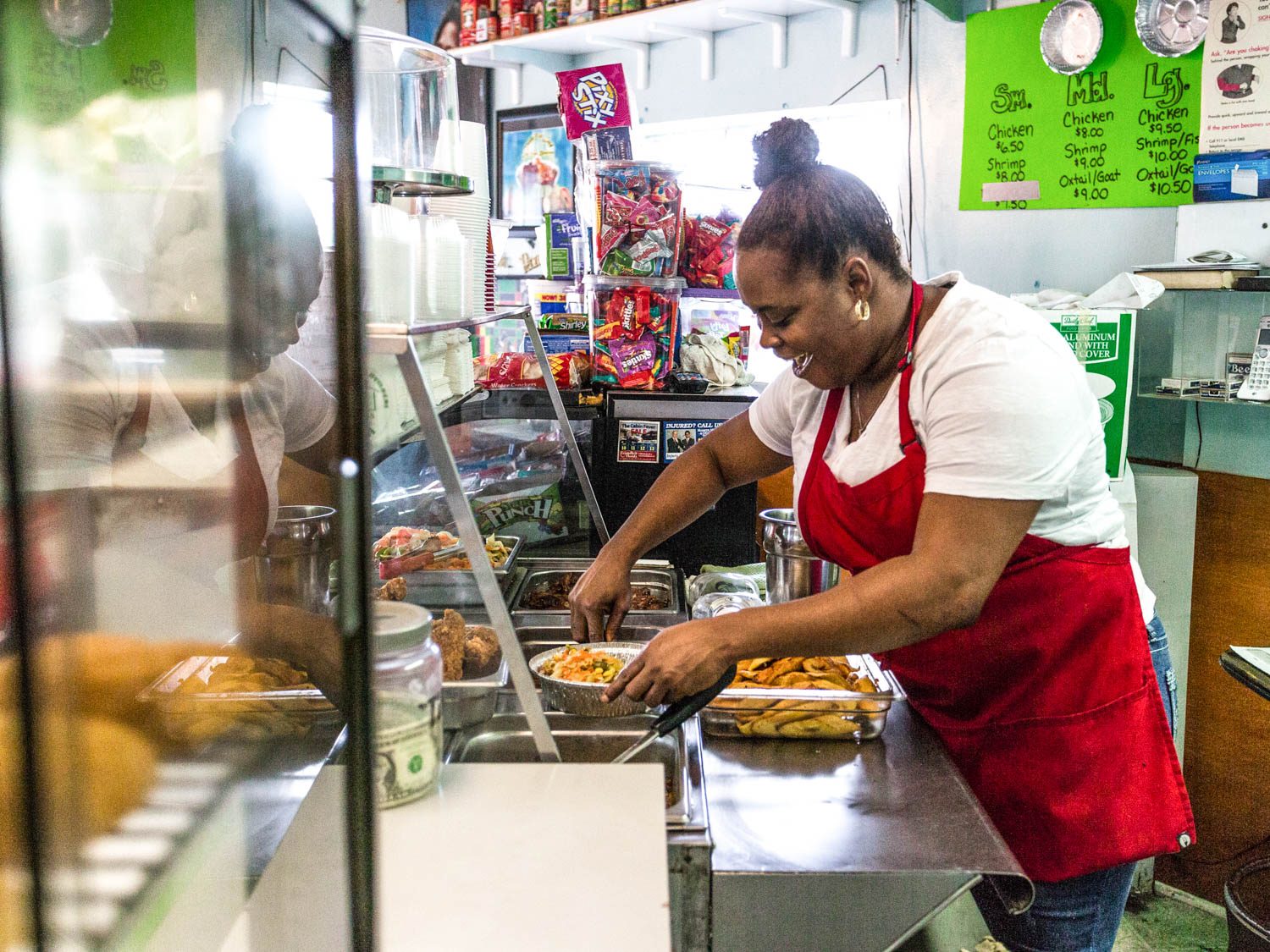
Melenda fills a to-go container.
There would be room in Top Taste for more tables, but the rest of the space is taken up with an ice cream freezer, a coffee machine, shelves of chips, two large beverage refrigerators, and a glass counter case bursting with candies. On top of this case is a large bowl of fruit and a freshly baked rum cake, courtesy of Melenda. A set of shelves above one table is loaded with Bartley’s favorite Jamaican hot sauces and seasoning blends. As Melenda clears your plate, she might give you a piece of fruit, on the house. “Something healthy for the road,” she’ll say, patting you on the back.
In Jamaica, Bartley says, it’s not unusual for a restaurant to double as a convenience store. Some Jamaican customers expect Bartley to stock all the same goods they found in restaurants back home—“beer, condoms, and cigarettes,” Bartley laughs. “You’d be surprised what people ask me for.” While he doesn’t sell those things, Bartley does offer plenty of esoteric ingredients, like Tastee Cheese, a processed white cheese packed in shallow cans. “This is the best cheese!” one customer proclaims as he walks out the door with a to-go container of curry goat. Damian says Tastee Cheese is usually paired with a fruit-filled, heavily spiced bread, called “bun,” which Melenda bakes on special occasions. Squeezed in among a pile of candy bars in the counter case is a jar labeled “ackee in brine.” A mild and buttery fruit related to the lychee, ackee can be found everywhere in Jamaica. The country’s national dish is ackee that’s lightly cooked, gently stirred, and served with rehydrated salt-cured fish.
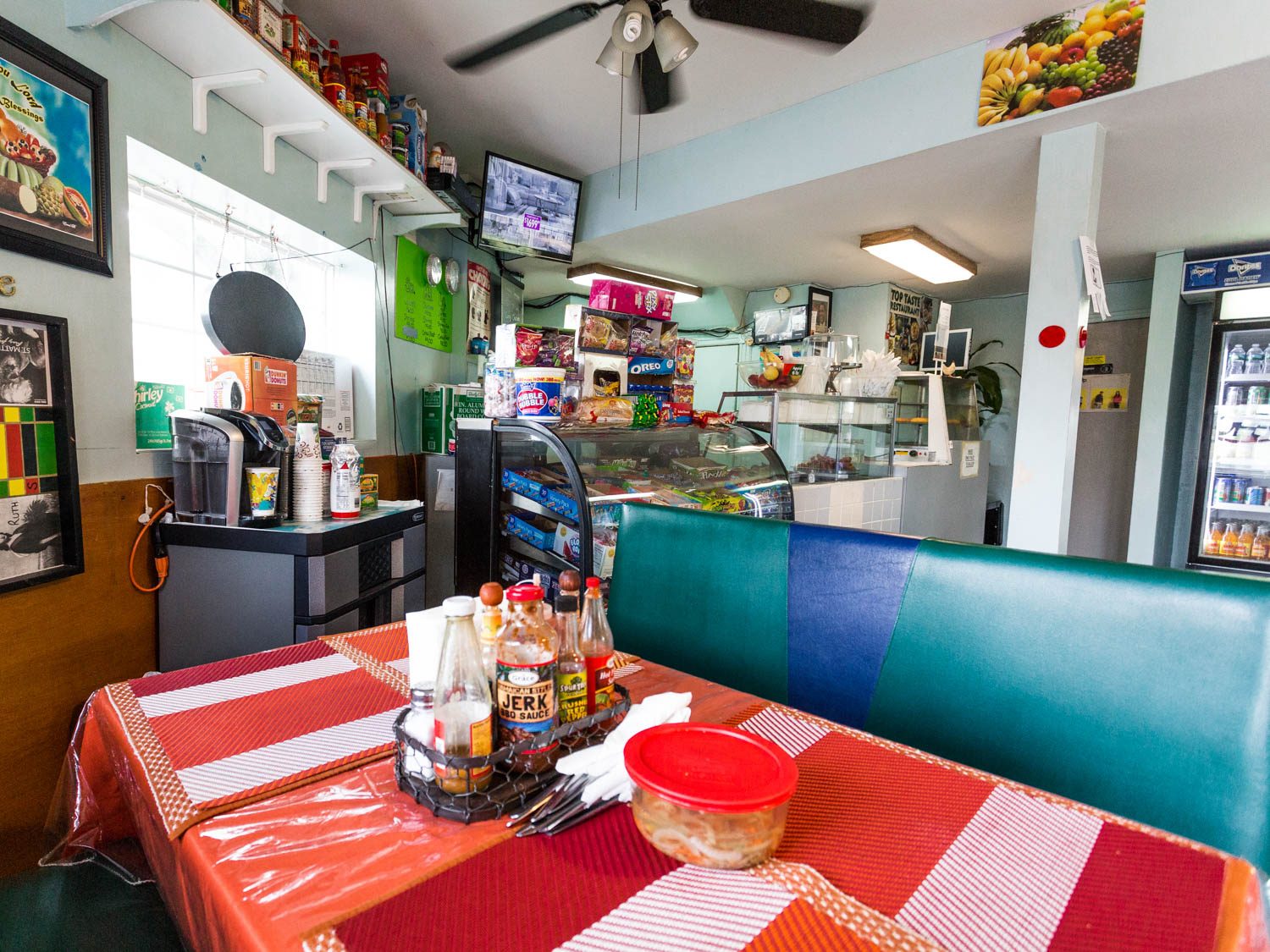
When Bartley isn’t in his narrow kitchen chopping cabbage or onions, or out back grilling jerk chicken, he’s talking with his customers. Two girls from the nearby high school come in for lunch, and Bartley brings them their food. He asks what they’re cooking for the holidays, and laughs when they respond to his questions in their impression of a Jamaican accent. “People just come and sit down and have a soda and chitchat,” says Bartley. “I talk to them, they say to me, ‘Man, you cheer my day up’…. I love it.”
While many of Bartley’s customers are Jamaicans yearning for familiar dishes, non-Jamaican locals have gotten hooked on the place, too. David Edwards, a deacon at the neighborhood church, was born in New York City but has lived in Kingston for 35 years. Since he first found Top Taste, Edwards has come in for oxtail as often as he can, and slowly turned more and more of his church onto Bartley’s cooking. Today, he’s picking up lunch for the bishop. “Whenever the bishop comes,” Edwards says, “she takes four or five of these plates of food back with her.”
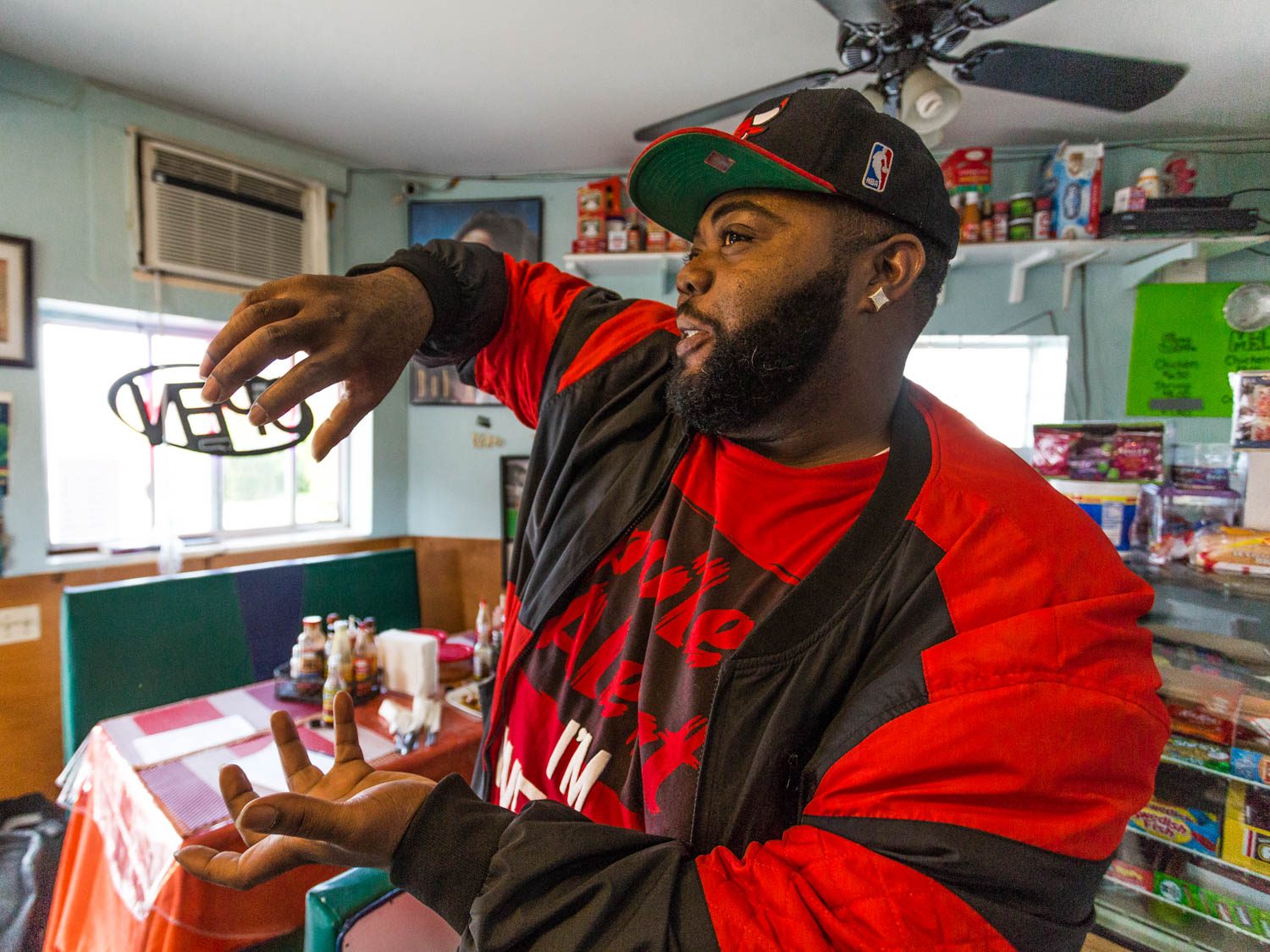
Jezzy talks Top Taste and ackee.
As the lunch rush at Top Taste ends, a man named Jezzy walks in. Bartley pokes his head out of the kitchen to wave hello. Jezzy moved to the US from Jamaica when he was three years old; now in his mid-20s, he does construction work nearby and comes here for lunch nearly every day, usually ordering Melenda’s whole fried fish. On days when he feels like eating at home, Jezzy comes to Top Taste to buy ingredients like ackee, which he can’t find anywhere else nearby. “In Jamaica, you’d have sheetrock on the roof,” says Jezzy, when I ask if this restaurant resembles the spots he loves back home. “They wouldn’t have the money to put up concrete, so they’d just put up zinc. But inside, the food and the way it’s set up, is the same.” To buy the goat, oxtail, and other hard-to-find products he needs to make his customers’ favorite dishes, Bartley drives the four-hour round-trip to and from New York City every two weeks.
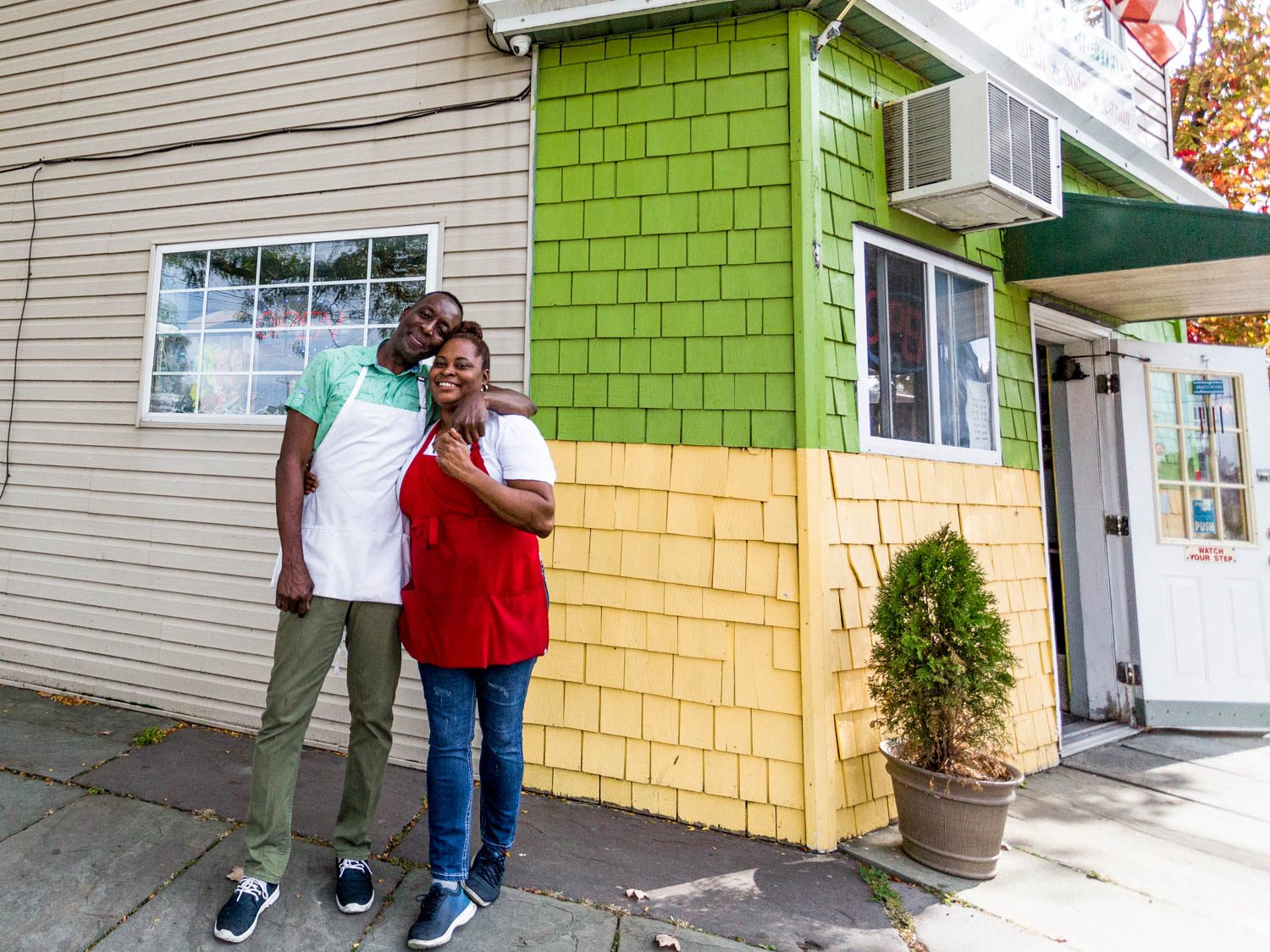
When Bartley first opened Top Taste, he brought his pastor along to give his blessing. Even then, the pastor saw the tiny restaurant’s potential: “The pastor looked at me and said, ‘I see you branching out to a bigger place.’” Now that Top Taste has attracted a ferociously loyal following, Bartley has been thinking about his pastor’s words. “If I moved to a bigger place,” he muses, “I would put more food. Stew peas, barbecue chicken, onion roasted chicken, macaroni and cheese, yam, banana. All the things I could have for them to eat right now…” Melenda pops her head out of the kitchen, where she’s just pulled a batch of plantains off the stove, and says, “We make everything with love.”
Asked if he misses home, Bartley replies with little hesitation. “I love it up here.” With the grill fired up, dancehall radio on loud, and door wide open, Top Taste isn’t just a taste of home. To Bartley, and so many of his customers, it is home.
[ad_2]
Source link



